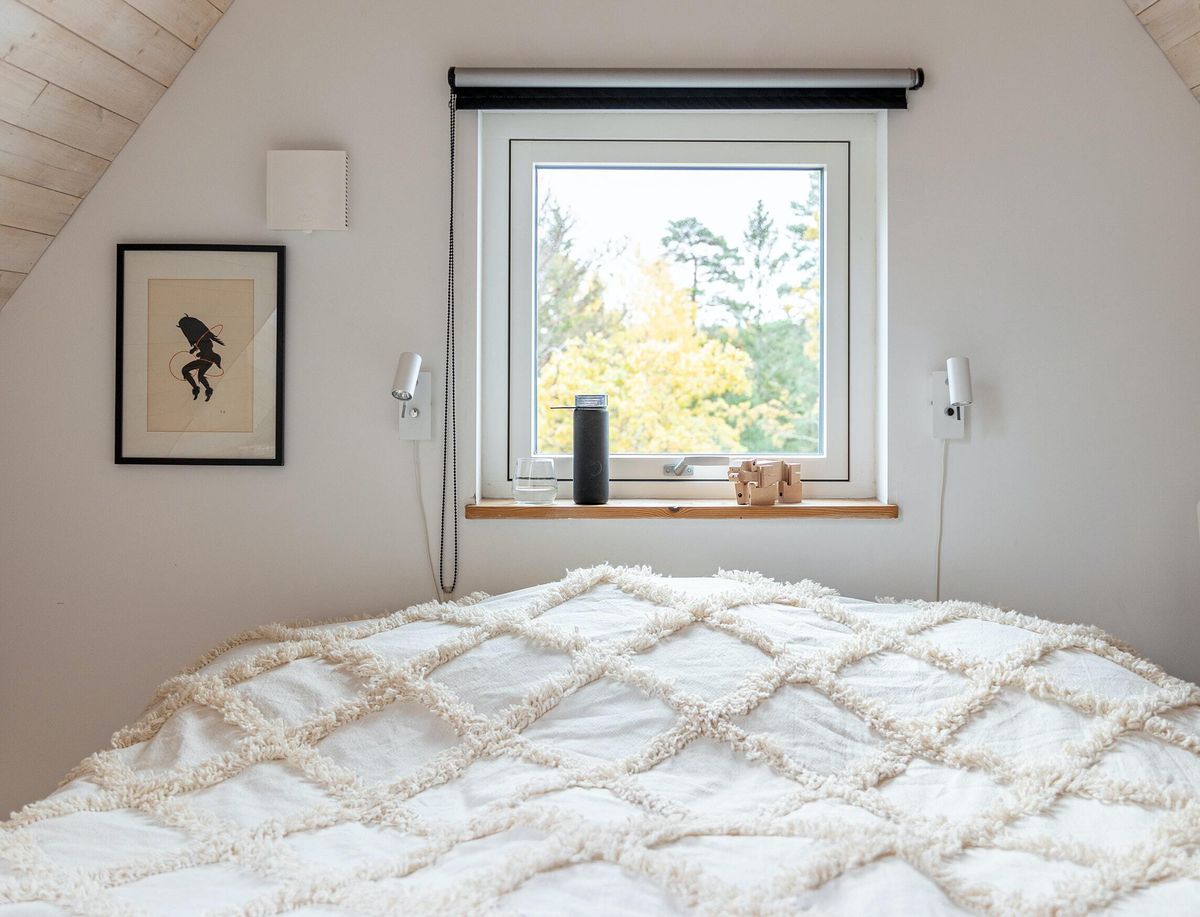7 things to keep in mind when writing a lease agreement for room rentals in Sweden
In this blog post, we go through 7 things that can be good to think about when you rent out a room in your home in Sweden.

Subletting a room in your home in Sweden is a perfect way to earn extra money while enjoying some great company at home. Once you have found your perfect roommate, it is a good idea to sign a lease agreement for the room to formalize what’s been agreed upon with your future tenant. There is no legal requirement in Sweden for the agreement to be in writing, and spoken agreements are also valid. However, preparing and signing a lease agreement for renting out a room is easy and it also makes sure that there are no misunderstandings between you and your tenant. We therefore recommend everyone who rents out a room to do so.
In this blog post, we go through 7 things that can be good to think about when you rent out a room in your home in Sweden. Did you know that you can find great tenants for your room on Hemavi? When using our service you will also get access to our digital lease agreements. Our agreements were prepared by property lawyers, are legally sound, and fully customizable. Simply choose your contract, fill in the information, and sign it online. We also offer guidance and help concerning deposit accounts - so that you can relax.
1. First check how your rental will be classified
It is much easier to rent out a room in your home than to rent out the entire home. For example, you do not need to have an approval from your landlord or housing cooperative (sw: bostadsrättsförening) to have a roommate at home. If you hold a first hand contract on your place you have the right to have a roommate without requesting any kind of permit. This is especially lucrative for somebody who lives alone in a larger apartment with several rooms, as it is always allowed to rent out some of the rooms to someone else.
However, there is a rule for always being able to rent out a room in your own home and that is that you live in the home yourself. If you do not live in the apartment or house to a "significant extent", it is no longer classified as above. Then you must get permission from your landlord or housing cooperative and follow the practices that applies to subletting a home.

2. Be clear about which house rules that applies in your home
Because you are responsible for your home, it can fall back on you if your roommate does not take care of your home, for example, by disturbing the neighbors. It is important that you are clear with your roommate about what he/she is allowed and not allowed to do and any other rules that you may have at home. It is a good idea to clearly inform them about these before the contract is signed. By doing so, you prevent unwanted behaviors that can negatively affect you in the long-run.
It is also a good idea to include in the rental contract what your resident is allowed to do and not do in their room. This can apply to installations such as setting up a TV in the room or if repainting is permitted. The more clear and informative you are, the better. You can do this by drafting and signing a roommate agreement.
3. What to include in a leases agreement for renting out a room
There are several things that should always be included in a rental contract when having a roommate to prevent any misunderstandings and unfortunate situations.
- The parties to the agreement
- For which period the lease agreement applies
- How much is the rent and what is included e.g. electricity, heating, water, furniture
- Which notice period applies
- If any deposit is to be paid
- What is included and house rules? For example, which places in the home your roommate has access to
4. What rent can I charge when renting out a room in Sweden?
There are different approaches to determining a rental amount that is reasonable for your roommate. We always recommend to look at the following things to get a good idea of the rent you can charge.
First take how much you yourself pay in rent for your home. Then calculate the rent per square meter in the home and then multiply this bt the area of the room. An example could be that if your rental apartment has a monthly rent of SEK 10,000, is 100 square meters big and the room you rent out is 30 square meters, it would be reasonable to charge around SEK 3,000 for the room.
Then, you have to look at what other parts of the home your resident has access to. It can be, for example, the bathroom or kitchen. Here you can add rent depending on how much your tenant gets access to. If we continue the example above and the common areas in your rental apartment are 30 square meters, and are used by both you and your tenant, it would be reasonable to charge SEK 1,500 ((10,000 * 0.30)/2) for these areas . The total rent you can charge for the room would then amount to SEK 4,500.
If the room you rent out is furnished, you have the right to add another 10-15 percent to the rent.
Finally, its always good to make sanity check on your calculation by looking at how much others in your area are charging to rent out a room. This is usually a good way to determine if the rent you want to charge is deemed reasonable.
It is important to set a reasonable rent for your roommate and by using the guidelines above, you can ensure that you do not charge too high rent while renting out a room. It is good to be aware that if you have a roommate in your home, he or she can report a rent that is too high and actually be entitled to a refund if it turns out that he or she is right. However, the possibility of these retroactive repayment does not apply to rooms that are rented out in condominiums or houses.
As a landlord, you can also choose to take out a deposit as security from your tenant. The deposit must not be unreasonably large but should be equal to one or a couple of months rent. The deposit must be refunded after your roommate moves out provided that the room and any other rooms and other areas he/she has access to are in the agreed condition.
5. Agree upon the notice period of the lease agreement
As a landlord renting out to a roommate, it is good to know what applies to termination of the lease. It is important that you or your roommate leave a written notice to ensure that the agreement has been terminated correctly and there are no misunderstandings between you and your roommate.
If you have not agreed on a notice period in the lease agreement, it is one month's notice for the tenant and three for the landlord by default. If you have agreed on a shorter notice period than this, it only applies to the tenant’s benefit. As an example, it would be allowed to agree on a notice period of 2 weeks for the tenant, but it would not be allowed to agree on a notice period of 1 month for the landlord.
Also, if the rental period is 9 months or longer, the lease agreement must be terminated if you don’t wish to extend it after the period has expired. If the rental period is shorter than 9 months, the agreement automatically ceases to apply at the end of the rental period.

6. Write an inventory list and take note of deficiencies in the home
An inventory list is easy to write and is basically a review of which furniture and other fixtures that are included in the rent and their condition. Also take the opportunity to take note of any damage to the apartment in general, preferably with photos. This is for the benefit of both you and your roommate to avoid conflicts in the future about furniture and fixtures are still there and being in the same or similar condition as when the roommate moved in. Please not that your roommate is not obliged to compensate for such damage that comes through normal wear and tear.
7. Investigate what your home insurance company says about having a roommate
Writing a lease agreement is a good first step to ensure that renting out a room and getting a roommate is a smooth and safe process. An additional step to be extra safe is to review your home insurance and what applies when living together with a roommate. What applies is different depending on which insurance company you have. For some, it is possible to have a roommate as co-insured and for others not. In that case, you should each have your own home insurance. The insurance company Hedvig has a home insurance that is tailored for those who live together and Hemavi has a fantastic offer that is perfect for both you and your roommate. If you use the code ‘Hemavi4’, you and your roommate will get a 50% discount on your first 4 months with Hedvig. Too good to be true? Yes, we agree!
Are you renting a room in Sweden?
Check out our Ultimate Guide to Writing a Room Rental Agreement in Sweden – it tells you everything you need to know about room rentals and their lease agreements in Sweden.
Did you know that you can find great tenants for your room on Hemavi? When using our service you will also get access to our digital lease agreements. Our agreements were prepared by property lawyers, are legally sound, and fully customizable. Simply choose your contract, fill in the information, and sign it online. We also offer guidance and help concerning deposit accounts - so that you can relax.




Comments ()